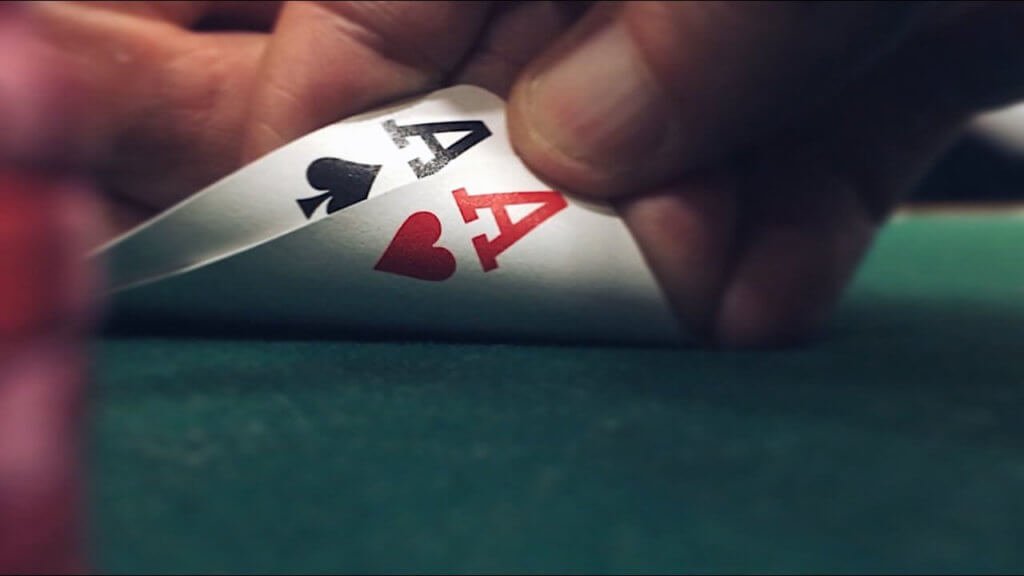Pocket aces refer to a pair of aces that is concealed. In actual fact, it is the best hand from 169 possible hands in a game of Texas Hold’em. Unfortunately, it is where many players make their first blunder. Although it is very effective, you might not be able to make the best of the perfect scenario if you don’t play it properly. As a matter of fact, if you don’t play them with a bit of caution, you may end up losing the big pot. You don’t have to fret though; this blog article has been designed to guide you into how to play pocket aces and make profits while you are at it.

Strategy One: Always explore the opportunity to bet or raise when you have Pocket Aces
It is crucial to understand that pocket aces are not the kind of hand that you should play against many opponents. The perfect scenario is to get heads-up on the flop. This means that dragging in at the early stage of the game is a very dangerous strategy to employ. In fact, you should avoid it as much as possible. Really, if you limp, you may have to face many opponents at the flop. At this point, you would need to be absolutely prepared to fold the hand to any remarkable quantity of action except you are able to hit your set.
It is important that you always look out to raise with pocket aces instead of trying to be tough or ‘limping in’. Of course, the last thing you want is to have to face many opponents at the flop. Another scenario that limping in can cause is to be raised by an opponent at the table. When you face this situation, you might want to re-raise and what this does is to set off the alarm bells in the mind of your opponents at the table. The question they would naturally ask is – what sort of hand do you have if you limp a moment and then go ahead to re-raise your raiser?
Generally, nine out of ten times when someone makes this kind of move, they have a sinister starting hand. Consequently, you should not raise when you have pocket aces. Raising will be like leaking out your own secret. It informs the opponents that you possess a big hand, just that it doesn’t reveal how big. It also assists in defining the hands of your opponents if they decide to call.
Strategy of Post Flop Pocket Aces
When you are on the flop, you would want to bet and raise again. After all, it is the only way you can get some more money into the coveted pot. Now, if you go heads-up against an opponent, you should check and provoke a bluff, especially if he is one of the aggressive kind of players you find at tables regularly.
Usually, you want to maintain the raising and betting flow in order to build the pot with pocket aces as much as you can. Now, it is not recommended that you continue to slow-play this kind of hand. In the real sense of the word, you will make more money when you bet instead of raising. Additionally, you should not slow-play when the board is well synchronized, and the opponent is drawing to a flush or a straight. Instead, you should make him pay and offer him the wrong odds pot to draw into.
It is important to mention that when you are playing online, you should give some time allowance between when you bet into pot on the flop. Usually, when people raise preflop and immediately go ahead to bet a large amount in the pot when it is their opportunity to act, it is a huge revelation that they possess over-pair hands. Therefore, take time and don’t act immediately.

Important Tips in playing Pocket Aces in Texas Hold’em
- Always maintain a poker face when you have read your cards. Don’t give any facial expression so no one would guess you have pocket aces.
- If you are small or big blind, you might decide to call if another player raised before you. However, if you are the first player to bet, simply call the big blind or raise by a small portion. Note, you shouldn’t bet like 5-x the blind or move all-in. You should put in raises, as many as possible. It is important that you don’t ever re-raise a pre-flop.
- If a player goes all-in preflop, call them. Allow some players to get out of the game and win the money back with time.
- You should read the flop and play the style that looks more like a flop. For instance, if you have high cards (K-10-J), then raise to around 10 or place a bet of the same value up to 30. You need to be careful of all-in because it is likely you have a straight. Also, if you have the triple A-6-10, then place a small raise on almost anything. If it’s quick straight (5-7-6), you should be careful but you can call. If you have nothing (4-8-2), you should place small raise on just anything. Now, if you have the dangerous K-K-Q, call and then fold later on to raise.
- If there is no obvious danger, you might go ahead to raise on the flop. However, if the river indicates that there are four cards in a row, you have to be careful of small raise. In this case, play similarly as you would suited card and play small raise.
- Read the river and if it doesn’t give you three aces, be careful of large raise. If you feel you are good, you can raise the raise, and if your opponent raises, just call.
- Finally, show your cards in a mysterious way. If you have won the hand, enjoy a small pleasure before you reveal your card. Well, don’t go overboard and gloat because the tide can turn. However, if you lose, still maintain your composure. There is still more games in the making.
Navigating Multi-Way Action with Pocket Aces
In multi-way pots, pocket aces require a nuanced approach. While they are the strongest starting hand, their value diminishes in multi-way scenarios. As players enter the pot, the complexity of the situation escalates, making it vital to adjust your strategy. To navigate these pots effectively, it’s crucial to balance the act of protecting your hand against multiple opponents while being ready to fold in the face of aggressive action, particularly on threatening boards. This cautious approach can prevent significant losses that often occur when overvaluing aces in crowded pots.
Adjusting Play Based on Opponent Types
Understanding and adapting to different types of opponents is key when playing pocket aces. Whether facing aggressive players, passive opponents, or ‘rocks’ known for their tight play, your strategy must shift accordingly. Against aggressive players, re-asserting dominance with strong betting is often effective, while caution is advised against tight players who show strength, as they are likely to hold strong hands. Pocket aces are a powerful tool, but their effectiveness is maximised when tailored to the tendencies and patterns of opponents you face.
Maximizing Value and Minimizing Risk
The art of playing pocket aces lies in the balance of maximising value and minimising risk. Consistently raising pre-flop and playing aggressively post-flop are fundamental strategies for extracting value. However, it’s equally important to recognize situations where your aces are likely beat. This awareness allows for disciplined folds, especially in multiway pots or against strong raises on dangerous boards. Remember, pocket aces offer significant profitability, but only when played with both aggression and a keen sense of self-preservation.
The Art of Slow Playing Pocket Aces
Slow playing pocket aces is a tempting strategy, often seen in cinematic portrayals of poker. However, it’s typically a mistake, especially in single-raised pots. The primary goal with aces is to build a large pot pre-flop, as this hand has the highest chance of winning at this stage. While there are rare situations where slow playing can be effective, such as against overly aggressive opponents or for deception against regulars, these are exceptions. Generally, fast play is the recommended approach to maximise value and avoid complex, riskier post-flop scenarios.
FAQs
What are the most effective ways to extract maximum value from Pocket Aces?
The key is consistent raising pre-flop and aggressive betting post-flop, adjusting to board texture and opponent behaviour. Avoid slow playing to prevent missed value opportunities.
How do you approach playing Pocket Aces in a fast-paced tournament?
Adopt an aggressive strategy while being mindful of tournament dynamics like blind structure and opponent stack sizes. Pre-flop aggression is crucial, but post-flop play may require more caution.
In what scenarios might it be beneficial to deviate from the standard “raise pre-flop” strategy with Pocket Aces?
Deviate in situations like facing a 4-bet with low stack-to-pot ratio, or when playing against highly aggressive or frequently folding opponents. Generally, raising and re-raising pre-flop is the standard approach.
 Analyzepoker
Analyzepoker